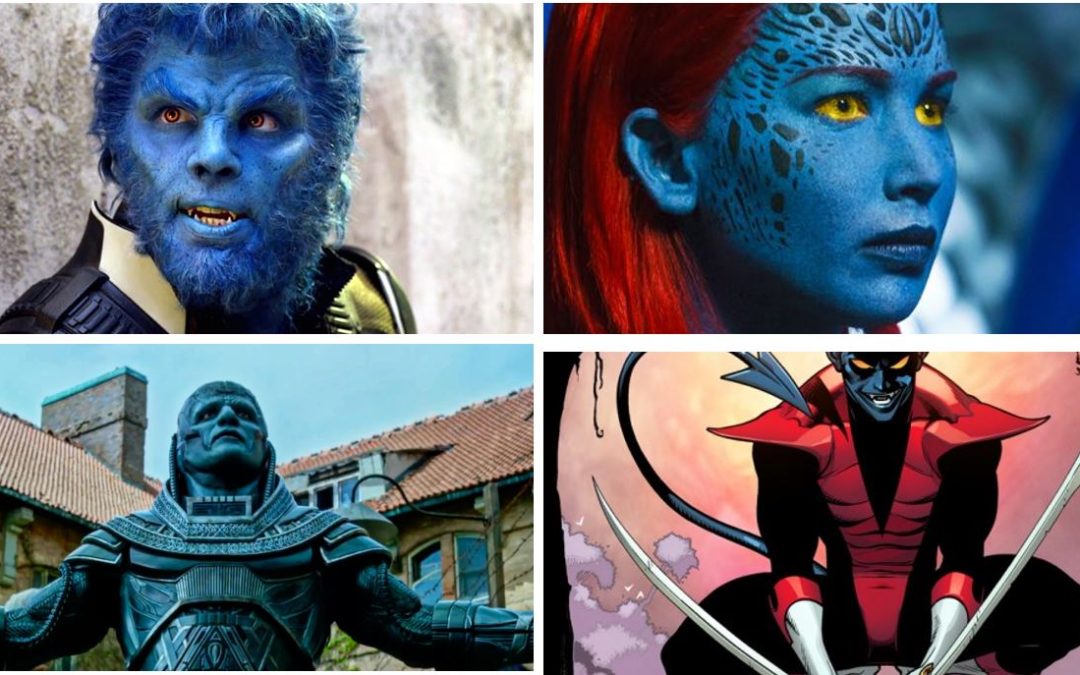Marvel’s X-Men franchise got a revitalization this week with the release of House of X #1, the first part of a 12-part relaunch of the X-Men Universe courtesy of writer Jonathan Hickman. The storyline is bold to say the least, and world-spanning, and is already receiving high praise as the start of a new way of looking at Marvel’s mutants. The first issue of House of X is in comic shops now (find your local one here) or can be purchased digitally through Comixology here. Powers of X #1 hits shops/Comixology next week.
Given Hickman’s love of the more cosmic scope and hard science fiction concepts (check his run on Fantastic Four, Avengers, New Avengers, Infinity and Secret Wars for more), I’ll probably be talking about his work on X-Men between now and October, but I did want to hit on one topic that presents a bit of trouble:
The color blue.
Blue has been a go-to color to indicate “otherness” in the X-Men (and other comics, to be fair) for years. A quick (and wildly incomplete) rundown of blue mutants gives us Beast, Nightcrawler, Angel, Mystique, and En Sabah Nur. And that’s not counting Yondu, Nebula, the entire Kree race (in the comics), and the pure-blood Atlanteans (Marvel’s, not DC’s).
There’s a lot of blue ink being splashed around Marvel’s comics, and its mutants have gotten a lot of it. Now, I get it – as the X-Men and mutants themselves are stand-ins for any persecuted group, “blue” can be a stand-in for any skin color except white, as a shorthand to indicate “difference.” That’s a no-brainer.
But this is The Science Of… not The Sociology Of… So let’s talk about blue mutants.
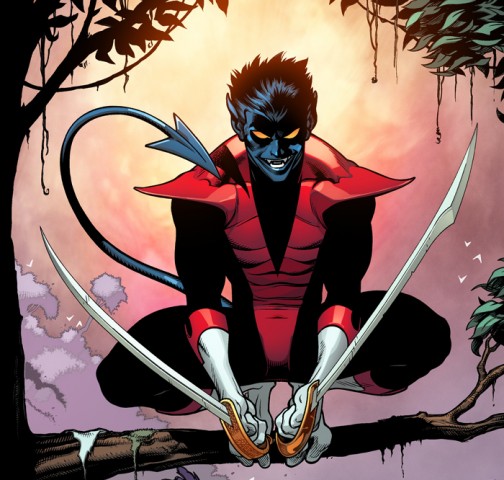
In the comics, Nightcrawler is so dark blue, he’s almost black (c) Marvel/Disney
If you were at our “Superhero Science: Ask Us Anything!” panel at April’s Awesome Con, you may remember Biology Professor Dr. Eric Spana of Duke University rolling his eyes at the idea of human mutants with blue skin. While Spana admits he was off on his broad-brushing of blue mutants as impossible, but…a mutation turning human skin blue, that has an endpoint of a mutant – a healthy, superheroing mutant having blue skin is somewhat…troublesome.
“We can sum up color into two broad categories: Structural color and pigment color,” Spana says. “Pigment color is what makes your jeans, pen ink and stained-glass blue. Structural color is a physics effect of light absorption and reflection where only the blue light is reflected and seen by your eyes. There are only a few organisms on Earth that can make a blue pigment – a few butterfly species, for example, and there are no vertebrates.”
“Vertebrate,” here meaning animals with backbones. An incredibly small number of animals can make a blue pigment for coloration, but none of the ones that can do that are, in fact, the large group that contains us.
For humans, being vertebrate and proud…well, that’s that.
We can’t make blue pigment. Don’t got the genes. Period.
People can’t be blue.
But there are blue people.
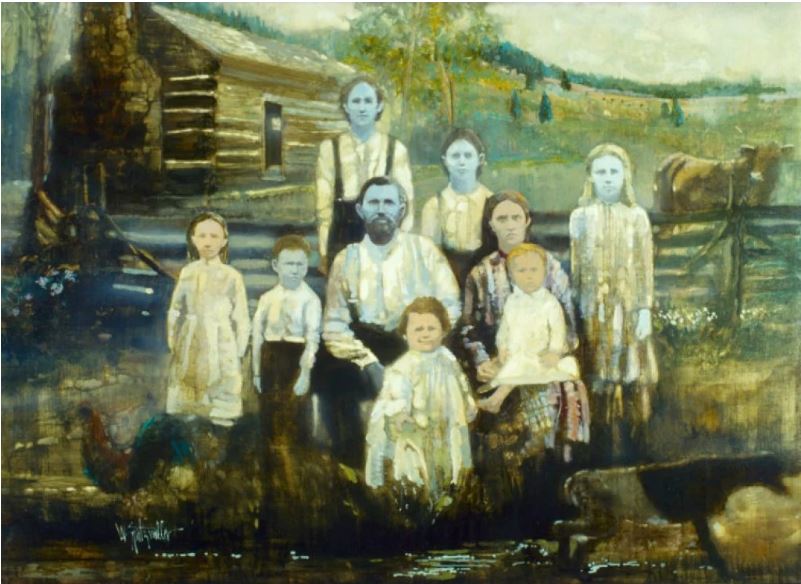
An illustration of the Fugate family of Eastern Kentucky
No, Seriously, Blue People
There have been cases of blue people. Legitimately – born blue, not like Paul Karason who turned himself blue after taking silver as a treatment for his argyria. In an X-Men-ish connection, the individuals who are born blue owe the blue tint of their skin to a mutation as well. But it’s not a good one.
The most famous “blue people” were members of the Fugate family of Eastern Kentucky in the late 1800s and early 1900s. Several family members suffered from methemoglobinemia, which can be caused as a result of exposure to certain chemicals, or, as in the case of the Fugate family, a recessive genetic trait.
Thinking back to biology and simply put, recessive traits are only expressed when an individual inherits two copies, one from the father, one from the mother. As with other isolated families in Eastern Kentucky/Appalachia, marriage of relatives was not exactly…frowned upon. As a result of family members marrying, when normal, healthy Fugates who carried the appropriate recessive gene married, the chances that their children would have methemoglobinemia would increase. The disease is the result of two genes, and to demonstrate condition, the child must inherit both from its parents, which results in it having a 25% chance if both parents are carriers, and unaffected.
Now before I go on, please understand that none of this should be viewed as some kind of hidden inbreeding slam. Genes in a region can disperse through a population over generations to the point that two completely unrelated individuals could be carriers of the recessive form and not know it.
Methemoglobinemia occurs when an individual’s blood has a higher than normal (10% to more than 20% compared to 1%) concentration of methemoglobin, which is a form of hemoglobin that doesn’t carry oxygen. Too much methemoglobin and the blood can’t carry or provide enough oxygen for the body’s needs, and cyanosis, with its blue skin tint results. When you’re really cold, your lips will turn blue too, and for largely the same reason – the capillaries in your lips and other extremities have clamped shut to make sure your body heat stays in your core. As a result – not as much oxygen, and you lose your normal tint.
Along with the genes that cause an increase in methemoglobin, individuals suffering from methemoglobinemia show a decrease in their levels of diaphorase, the enzyme that normally converts methemoglobin to hemoglobin.
“In severe cases of this condition, altered oxygen binding to that form of hemoglobin causes lowered oxygen availability and cyanosis which is a bluish skin trait,” Spana explains. “This seems unlikely for X-Men as the low oxygen causes substantial health problems, not superhero traits.”
As Spana hints though, there are instances where individuals with methemoglobinemia are healthy – where 10 – 20% of the hemoglobin in their blood is methemoglobin is combined with a decrease in diaphorase levels, and they’re fine. There are reports of individuals with methemoglobinemia living well into their eighth or ninth decade and having quite large families. Luna Fugate (who lived to 84 and had 13 children) – according to reports, had dark blue skin, the darkest of all the Fugates of Eastern Kentucky.
Understandably, members of the Fugate – and other families that had the condition – often kept to themselves, not wanting to be a spectacle.
Methemoglobinemia is only seen very rarely now – many of the members of the Fugate family have moved away from the region their ancestors inhabited, and as a result, the recessive genes that cause methemoglobinemia rarely, if ever, find another copy to result in a full-blown case of the disease.
So – blue people do exist, and in many cases, can be quite healthy. But methemoglobinemia is vanishingly rare. The number of blue individuals with blue skin in the X-Men and larger Marvel Universe stretches the idea that the condition is responsible for their skin color to the breaking point.
But still – just to be clear, those suffering from methemoglobinemia are not blue because of a blue pigment. They’re blue because of the associated cyanosis and their blood’s oxygen deprivation.
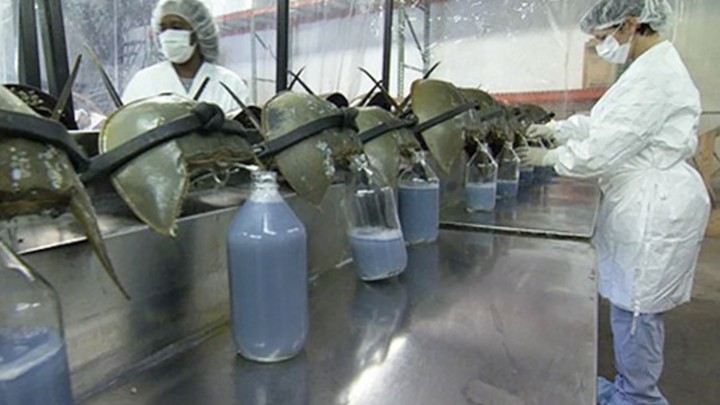
Horseshoe crab blood is truly, seriously, blue. (c) The Atlantic
The True Blue Bloods of the Animal Kingdom
“An example that doesn’t work for X-Men is found in horseshoe crabs’ blue blood,” Spana says. “The blue blood is caused by a copper-containing protein called hemocyanin that they use to carry oxygen in their hemolymph, which is the crab version of blood. While blue blood would give a nice tint to skin, hemocyanin is only found in a few molluscs and some arachnids and other arthropods. Humans just don’t have the gene for this to be the cause of X-Men’s blueness – but on the other hand, is this where the Kree blue skin and blue blood come from?”
That last bit about humans is where Spana’s scientific mind has to draw a line between real-world science and comic book science: mutation is changing an existing gene, not adding or removing genes from other organisms. If, for instance, Hickman (and I am in no way saying this is what may happen) has a line of dialogue that says blue mutants are blue due to hemocyanin, well…something in Spana and other biology teachers and researchers who are X-Men fans would die a little. As Spana said, humans don’t have the gene for hemocyanin, and there’s virtually no way a spontaneous change in human DNA would result in it appearing in an individual – or for that matter, a unique blue pigment showing up spontaneously – not to mention happening over and over and over again.
It’s the same thing with other mutants that can turn scientists into bad guys when asked a question at a “Superhero Science” panel: “How can (X-Men character) have (non-human mutation)?
No one likes to hear, “They can’t,” but really – Warren Worthington III sprouting lovely, angelic feathered wings out of his back? Try and track all the mutational changes that would’ve had to have occurred for that to happen. Mutation is changing the existing, not addition of what’s not there. Yes, there is a phenomenon called horizontal gene transfer from (mostly unicellular) organism to organism, but that’s not mutation, which is the hallmark of the X-Men.
But all of that isn’t to rain on the X-parade. not at all. The X-Men are, and always will be cool. But if you’re digging some science of mutations and genetics, they’re the springboard, not the end result. Take that interest and feed it with any of the links in this article or those below. Trust me, there are plenty of geneticists, biologists and researchers out there who know exactly who the X-Men are, and are bigger fans than you. What do you think helped fuel their interest in their fields?
Oh, and Hank McCoy, Beast? Yes he’s a mutant, but he genetically modified himself post-mutation. He can star in his own title, GMO-Men. And as I’ll talk about in a little bit, there is hope for him.
“But wait…” you say…
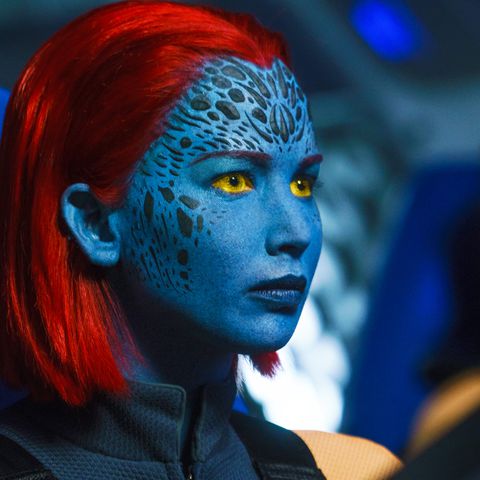
Mystique had it all – blue skin, blue…stuff on her skin, too. (c) Sony/Disney
What About the Actual, For Real Blue Animals, Then?
“What about that bird?”
“That mandrill’s face and butt?”
“That shrimp?”
“That bug?”
“That monkey’s scrotum?”
“My blue eyes?”
If blue pigment is so vanishingly rare in animals, why are there a fair number of instances of blue things out there?
They’re blue by structure, not by pigment.
“In the case of many blue animals, the color comes from when white light hits the sample, and most of the other colors of the rainbow are scattered and absorbed,” Spana says, “but the blue light is reflected. This is how Blue Morpho butterflies show their vivid blue: the structure of chitin in the wings reflects blue light. In birds like blue jays and peacocks, the structure of keratin in the feathers essentially causes the same effect. In some mammals and other animals, blue skin can be caused by ordered collagen fibers in the skin.”
It’s the same with blue eyes. There’s no blue pigment in the iris of your eye that makes it blue. In the case of human eyes and all the other examples, the blue color occurs because of the Tyndall Effect – when light passes through some materials, other colors are transmitted or absorbed, but in this case, blue is scattered and you see it. People with blue eyes have no melanin in their irises, allowing the blue, incoming light (that’s part of white light) to scatter the most, and be seen the most while other colors are transmitted through and absorbed by materials behind the iris.
It’s similar to why the sky is blue, or why motorcycle exhaust can appear blueish-white, or skim milk can look flat-out blue in bright light – blue light is scattered the most. Oh, and when it comes to eyes, the intensity of the “blue” of a person’s eyes depends entirely on the intensity and composition of the light, so someone with strikingly, almost glowly blue eyes doesn’t have them all the time – only in the right light.
“For the X-Men, two of the above examples could actually explain how they get blue – humans don’t make chitin, so that’s out,” Spana says. “The keratin protein is not only a major protein component of feathers, but also human hair – and nails, etc. So might Beast’s blue fur derive from two different mutations: one that causes long fur/hair and another that organizes the keratin in the hair to reflect blue light like a blue jay? Nightcrawler, however doesn’t have that excess hair, but has blue skin. His mutation might be one like the ordered collagen fibers seen on the noses and backsides of mandrills and give him blue skin all over.”
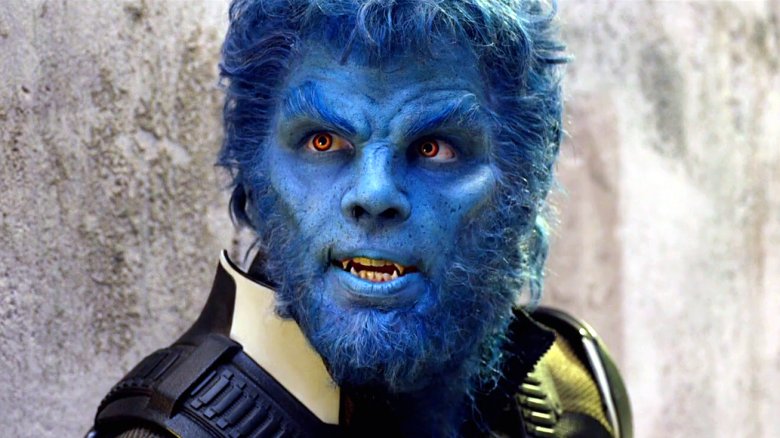
Movie Beats has blue skin to go along with his blue fur. (c) Sony/Disney
Spana’s view of a few tweaks of Nightcrawler’s genes that would give him blue skin doesn’t slam the door shut on blue mutants. Mandrills are primates so at least pieces of the changes that need to be made are in human DNA, but to adjust all of those genes to get blue skin as a mutation? That’s a tough sell.
An easier sell? CRISPR – the technology that allows scientists (or largely, anyone) to insert genes at specific locations in DNA.
“Oh, that would be killer,” Spana says. “If the molecular change in human vs mandrill collagen fibers were easy, you could make genetic tattoos via specific application of CRISPR to skin regions! That would make the blue structural rather than pigment based!”
But again – no pigment. Only structure to get that blue.
So whatever Hickman has planned for Marvel’s mutants in terms of new relationships, new teams, new power structures, be sure to take a moment to show some appreciation when a blue mutant takes the stage – that’s some major genetic work going on right there.
But no pigment. Only structure.
More:
How Animals Hacked the Rainbow and Got Stumped on Blue
How Nature Uses Physics to Make Blue Without Pigment


